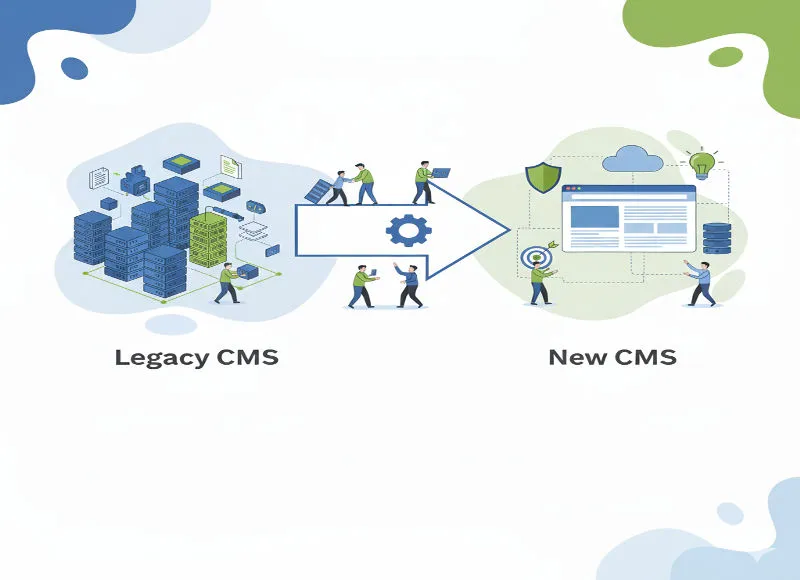Table of Contents
Discover why email testing tools are essential for web development companies. Improve deliverability, enhance user experience, and boost client satisfaction.

Reliable email communication is important in web development projects, for instance, transactional emails, contact forms, and password reset emails.
Even with a promising copy and design, your emails may not reach the target user’s inbox. According to reports, 1 in 10 emails are rejected by the receiver mailbox.
Why?
There are other elements in play when it comes to email deliverability. If your email has a broken design, missing authentication records, SMTP server misconfigurations, incompatibility with various email clients, etc., it may land in the spam folders.
Email testing tools check your emails for issues, correct them, and make sure they perform excellently across platforms, devices, and inboxes.
In this article, you will understand the importance of testing emails and some of the best email testing tools for development companies.
The Role of Emails in Web Development
Emails are a vital tool of communication in the web development process. They make it easier for web developers, managers, clients, and users to communicate effectively and stay informed about project updates, requirements, testing, feedback, and more.
Sending timely emails, such as important notifications, fresh updates, new registrations, sudden password resets, etc., helps you engage with your end users, make them feel valued, and connect to them on a personal level. This is a chance for you to build trust with them, promote new features, and boost site traffic.
Using emails in your web development workflow is a win-win for all parties – developers, the company, clients, and end users, ultimately leading to your project’s success.
Let’s now discuss the different types of emails web developers usually handle:
- Account verification emails: When a user signs up for your newsletter or website, account verification emails are sent. This confirms their identity and makes sure they’ve entered a correct and valid email address for smooth onboarding.
- Password resets: Password reset emails are a type of triggered email, sent to users if they click on the “Forgot Password” button. It allows the user to reset the password and recover their accounts.
- Newsletter emails: These emails keep your subscribers engaged with fresh content about your products or services, updates, new features, etc. You can also send informational articles, posts, tips and tricks, etc. that can add value to your subscribers’ lives.
- Promotional emails: These emails help you promote your product or service. You can notify users about new offers, discounts, latest releases, product updates, etc.
- Transactional emails: Transactional emails have content customized for individual users. These emails could be triggered (after an event), automatic, personalized, or real-time. Examples: Emails for subscription renewals, cart abandonment, notifications from social media, online surveys, shipping alerts, etc.
- Contact form submission emails: These emails are sent when a user fills up and submits a contact form.
Other types of emails developers create are welcome emails, milestone emails, privacy policy updates, feedback requests, referral emails, and so on.
Common Issues with Emails
Despite being one of the most preferable modes of communication, emails also come with many challenges:
Emails Landing in Spam Folders
Even if your email is legitimate, spam filters might mark it as spam to prevent your subscribers from accessing it. But why? The content in the mail could be the reason.
Emails with misleading or incorrect subject lines, missing headers, lacking authentication protocols, overusing certain keywords or spammy language, and suspicious attachments or links could land in the spam folder.
For example, using too many exclamations or phases, such as “Click here”, “Buy Now”, etc. could trigger spam filters. Avoid or limit their use. To increase deliverability, implement authentication standards, such as SPF, DMARC, and DKIM, and test your emails.
Broken Email Templates
Different email clients (such as Gmail and Outlook) could render HTML and CSS differently. If you face issues in rendering the emails across different clients, the reason could be unsupported code, incorrect MIME types used, missing doctype, etc. Broken email templates could distort the email layout.
For example, Outlook requires line CSS but Google supports embedded CSS. Result? Misaligned layouts or inconsistent fonts. Some clients don’t support advanced CSS functionalities, such as media queries while many of them block images by default.
So, it’s important to test your emails on different clients and devices to ensure the rendering is correct.
Misconfigured SMTP Servers
Simple Mail Transfer Protocol (SMTP) servers route and send emails. If your SMTP servers are not configured correctly, it could lead to poor email delivery, such as delivery failures and delays. These misconfigurations can be:
- Incorrect authentication records, such as DMARC, SPF, and DKIM
- Wrong port settings for encrypted connections
- Not linking the SMTP to a verified domain
- Using free SMTP services for sending bulk emails
Other email issues are file compatibility and attachment issues, inbox overload, and more. These issues could create bigger problems, such as legal troubles, low engagement, lost customer trust, etc. if you don’t fix them in time.
What Are Email Testing Tools?
An email testing tool is software that allows the development and marketing teams to preview and test an email before sending it to a customer, subscriber, or target audience. The tool checks the email’s content, design, functionality, compatibility, and deliverability. This verifies whether the email is functioning properly across various devices, platforms, and email clients. This way, your emails reach the intended recipient without delays or errors.
Email testing tools automate the process of testing emails to save developers and marketers time spent reviewing each email manually. These can help you identify issues accurately and fix them faster, so you send the best version of the email. This helps improve your email deliverability, engagement, conversion rates, user experience, and brand reputation.
Here’s what email testing tools provide web development companies with:
- Previews: Your audience may be using different devices (eg. computers, mobile devices, tablets, etc.) and platforms (Android, macOS, etc.), and email clients. Email testing tools let developers see how their emails look across various devices and platforms. This way, you can optimize your emails by correcting errors and inconsistencies in design, content, etc., and improve user experience.
- Authentication checks: Email testing software lets you verify if the email’s authentication records, like DMARC, DKIM, and SPF, have correct configurations. If not, correct them to improve deliverability.
- Deliverability tests: Use an email testing tool to evaluate if the email has spam triggers, authentication issues, missing headers, misconfigurations, etc. You can remove these issues to improve your delivery rates.
- Functionality and design tests: Email testing software checks if the buttons, links, images, and dynamic elements in your emails are working well across platforms. Also, it checks whether the fonts are consistent or not, formatting issues, etc. For example, you can test whether a password reset button actually redirects users to the correct page.
- Content analysis: Email testing tools analyze your email content for issues, such as spammy words, too many exclamations, overuse of capitalization, poor image-to-text ratios, misleading subject lines, etc. This helps prevent spam filters from flagging your email as spam.
- A/B testing: You can conduct A/B testing on your emails to test different versions of your emails with different styles, formats, content, etc., and check which one is performing better.
Benefits of Using Email Testing Tools
Based on a HubSpot study, tested emails bring a 28% higher return on investment (ROI). Using email testing tools benefits web development companies in various ways:
Higher Email Deliverability
Testing your emails helps you detect bugs and errors in your email infrastructure early in the development process. Many email testing tools also allow you to monitor for deliverability issues, such as bounces, spam traps, delays, and failures.
This gives you a chance to fix issues in your emails, whether it's in content, design, formatting, or authentication, before sending them to your audience. These error-free, legitimate-looking emails are more likely to reach the target inbox, instead of landing in the spam folders.
Saves Time
Testing individual emails manually across different browsers, devices, and platforms is time, effort, and resource-consuming. Not to mention, there’s a chance of human errors.
Email testing tools automate the testing process to accurately find issues in your emails, such as formatting issues, design issues, spelling mistakes, etc. These tools verify if an email is good enough to be sent successfully and received in the target user’s inbox without delays. This allows developers to fix issues faster and frees them to focus on more important tasks.
Improved User Experience
Your emails must be delivered successfully and look consistent across devices, platforms, or web browsers your customers or subscribers use.
For example, you send a password reset email to a user to enable them to test their password in case they have lost it. Due to the errors in your email, the email might not reach the user at all or get delayed. Similarly, if you don’t optimize the design for different platforms, the user will face trouble understanding the content. This takes a toll on user experience, in both cases.
Testing your emails before sending them with the help of an email testing tool prevents such incidents. It helps you send accurate, timely, and consistent emails to users across platforms and maintain trust. This also encourages the users to engage more with your email and increases the chances of conversion.
Brand Reputation
Emails with no proper authentication, spelling mistakes, and poor design and formatting question the sender’s credibility. For example, missing authentication records and spammy language trigger spam filters, which send your emails straight to the spam folder. Too many spam emails affect your brand’s reputation and challenge your trustworthiness.
Testing your emails with email testing tools will quickly check for issues in authentication, SMTP server configuration, spam content, and so on. You can fix those errors to improve deliverability and protect your brand’s reputation.
Email testing tool recommendations for web development companies
Here are some of our best recommendations if you are looking for an email testing tool for your web development company:
Mailtrap
Mailtrap is one of the best email services for transactional emails. It offers a developer-friendly tool to test how your emails perform across various platforms, devices, and email clients. Use the tool to preview your emails, check the spam score, and inspect their HTML or CSS across various mobile and web environments.
Mailtrap Email Testing comes with a sandbox environment where you can capture, test, and debug your emails safely in dev, staging, and QA environments. This prevents you from interfering with the actual environment or spamming real subscribers with too many test emails.
Features
- Fake SMTP server to test emails safely
- Spam checker to improve sender reputation
- HTML/CSS checker across Gmail, Apple Mail, Outlook, etc. to fix layout and compatibility issues
- QA automation with a testing API to test email sequences
- Built-in integrations for PHP, Python, Ruby, Node.js, etc.
Pricing: Offers a free forever plan while the paid plans start at $14.99 per month.
Postmark
Postmark allows developers to test and debug emails easily and get detailed insights into email deliverability. It verifies domains to avoid spam filters and increase email deliverability. This also prevents you from sending emails to invalid or incorrect email addresses, saving time and cost.
Features
- Offers API libraries for PHP, Node.js, Ruby, Ruby on Rails, Curl, C+, and other programming languages
- Test across Gmail, Hotmail, Apple, Yahoo, and AOL
- Offers configuration assistance for SPF, DMARC, and DKIM to protect the sender's reputation
- Separates transactional emails from bulk emails for faster delivery
Pricing: Free plan available, paid plans start at $15/month
SendGrid
SendGrid by Twillio offers integrated Email Testing to inspect and troubleshoot your emails before sending them. It catches spam content; design, format, and layout issues; and broken links, images, and buttons to keep emails error-free. It also shows how your emails look across various email clients, devices, and browsers.
Features
- Inbox render test for Gmail, Outlook, Android, iOS, and more
- Spam testing for your emails against powerful spam filters to improve deliverability
- Validates links, URLs, and buttons and ensures their metadata, redirects, and reputation are correct
Pricing: Free plan available, paid plans start from $19.95/month.
Conclusion
Email testing tools allow web development companies to test and debug their emails for issues, such as misconfigured SMTP servers, missing authentication records, spammy content, design flaws, compatibility with email clients, etc. This way, you can send flawless, legitimate-looking, and correct emails to subscribers to improve email deliverability, sender’s reputation, and user experience. Beyond reliable email testing, large-scale web projects often depend on robust backend systems and well-integrated enterprise solutions. Partnering with experienced software development firms such as Langate can help web development companies design secure, scalable architectures that support automation, communication workflows, and data-driven insights. Their expertise in custom enterprise software ensures that email systems and web applications perform consistently under complex operational demands.
Integrate email testing tools, such as Mailtrap into your workflow to keep your communications professional, effective, and consistent across platforms and deliver more reliable web solutions.
Recent Blogs
9 Operational Excellence Strategies: How Leading Enterprises Optimize Performance
-
24 Dec 2025
-
6 Min
-
34







